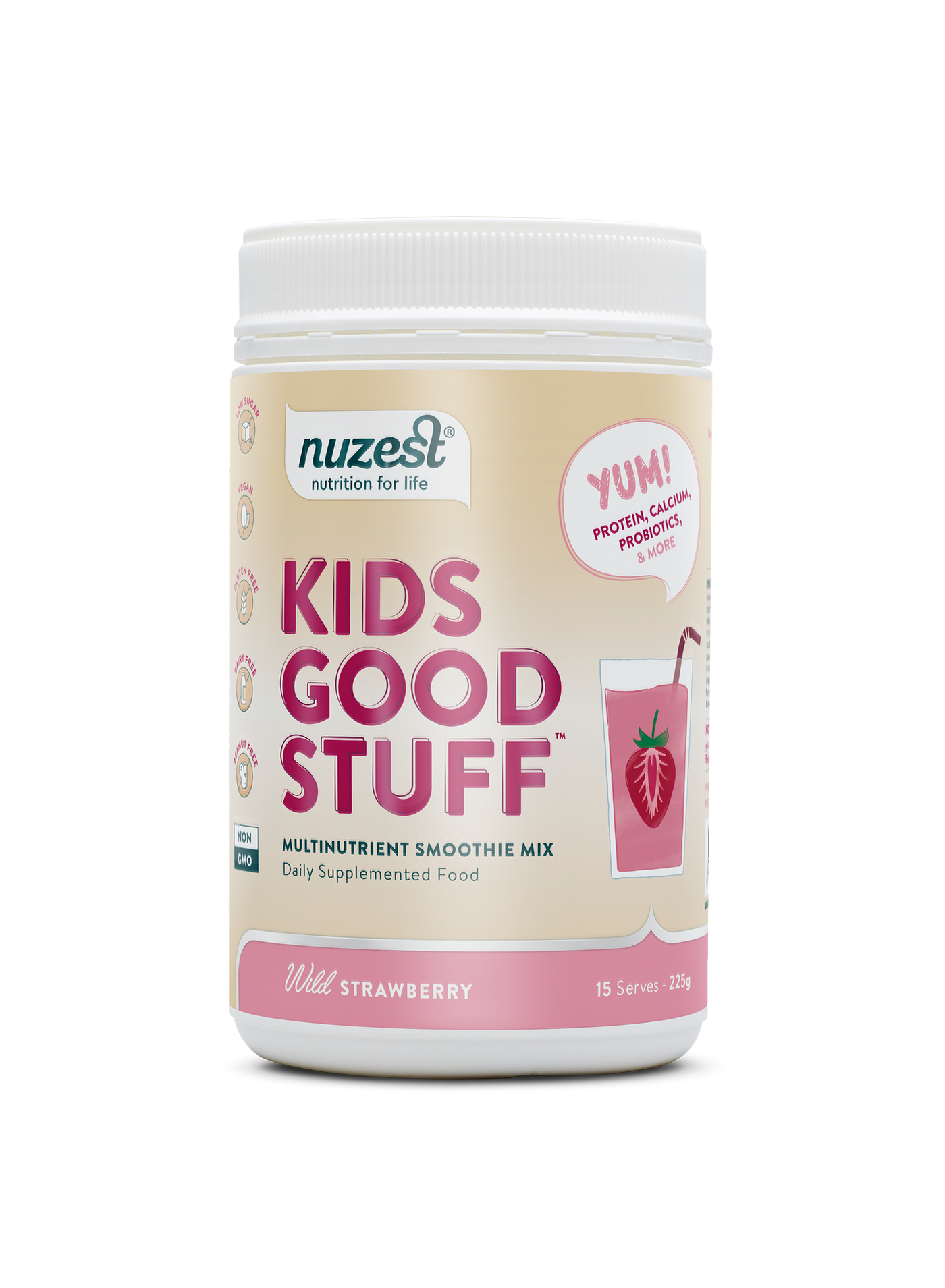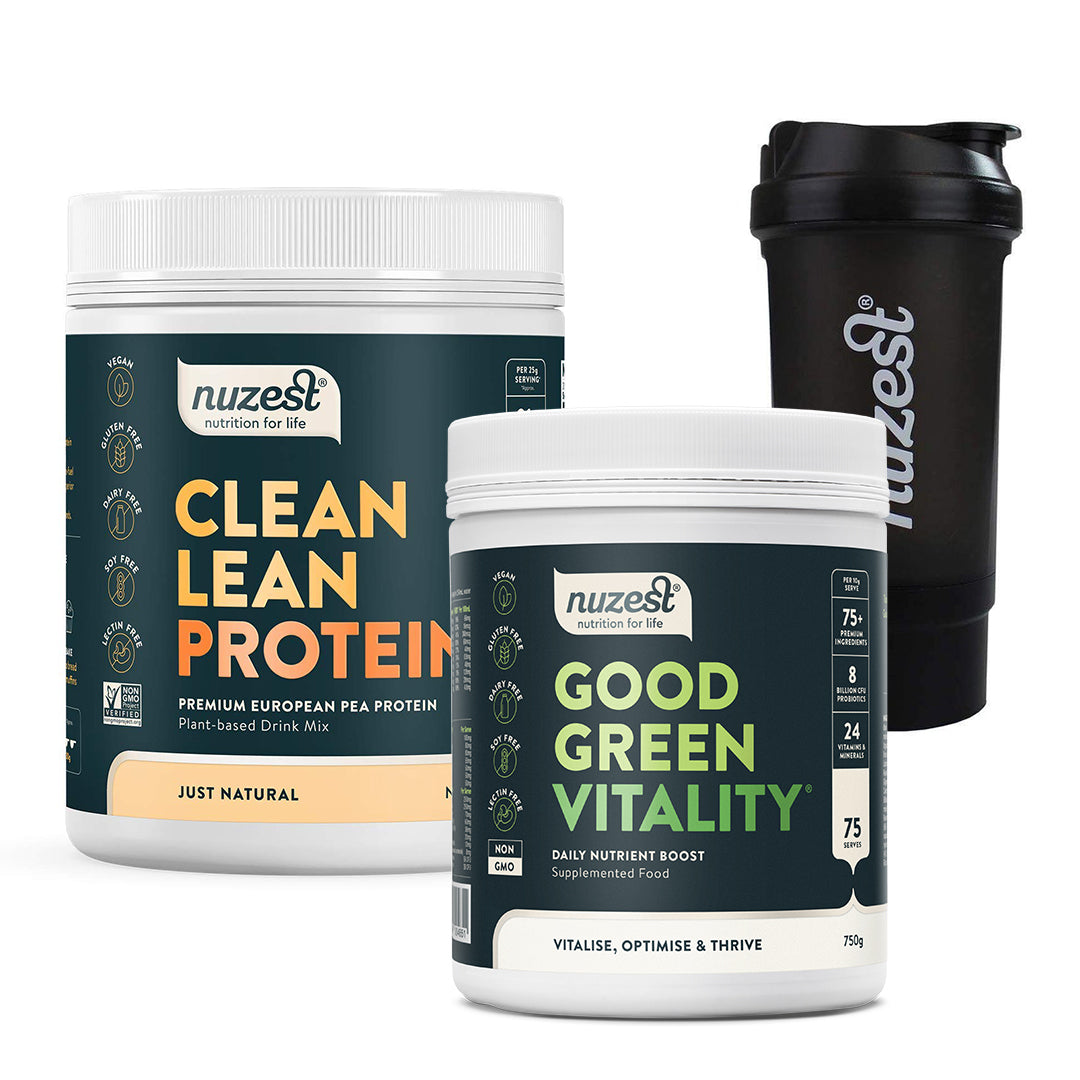Kids Good Stuff for Skin Health

Author: Lauren Parchi
Research suggests that more than 65% of children experience skin issues by the time they are five.3 This can be influenced by a number of circumstances including family history, immunity, social and environmental factors.3 Climate can play a role2 (warmer climates have been shown to increase the risk of conditions like pyoderma), as can low hygiene, which has been associated with increased rates of scabies.2
The skin makes up the integumentary system and provides our bodies with a physical barrier against infection, chemicals and the surrounding environment. When this barrier is compromised by dramatic changes such as climate and hygiene, alterations in the skin can occur, resulting in skin disorders.1,2 Immune disfunction or dysregulation also plays a significant role in the proliferation of skin disorders.1
What are some common skin conditions in children?
Like adults, skin conditions in children can manifest in a plethora of ways. While parents often hear horror stories of impetigo, head lice, scabies and shingles, it’s Atopic Dermatitis (AD) or eczema that is actually one of the most common childhood skin conditions.4,5
Eczema is a pruritic (itchy!), chronic skin condition, with 50% of cases diagnosed by the age of one.6 Eczema has a significant impact on quality of life, with 50% of children reporting negative effects on sleep, mood and physical activity.6
The prevalence of eczema is thought to be the result of interactions between genetic and environmental factors, and immune dysregulation. Increased serum immunoglobulin E (IgE), elevated Th2 cytokines and T cells have been identified in eczema.4 Children with a family history of eczema, asthma or allergic rhinitis have an increased risk of eczema compared to those without a family history.6
How to keep your child’s skin healthy

There are a number of lifestyle factors that can improve children’s skin health:
- Drink water. Children aged between 4 and 14 should consume 5-6 cups of water per day.7
- Wear sunscreen with an SPF of at least 30.
- Avoid products that contain harsh chemicals like sulphates and parabens.
- Eat fresh fruits and vegetables.
- Add one daily serve of Kids Good Stuff to your child’s diet.
Kids Good Stuff for skin health
Kids Good Stuff is an all-in-one, convenient nutritional supplement that contains ingredients to support skin health.
Beta-glucans
Beta glucans are derived from sources such as yeast, grains and fungus and possess biological activities that enhance immune function.8 Beta glucans have been found to promote wound healing via modulation of immune cells and proliferation of keratinocytes and fibroblasts through specific receptors such as Dectin-1.8
Probiotics
Inflammation is an immune response commonly seen in skin conditions. Probiotic strains such as Lactobacillus exert anti-inflammatory and immune-modulatory effects via interactions with T and B cells.9 Probiotics may therefore assist in the treatment of inflammatory conditions such as AD.9
Vitamin B5
Pantothenic acid (B5) is a water-soluble B vitamin and has been found to be effective in treating skin conditions such as acne via antibacterial and anti-inflammatory actions.10 B5 is also suggested to regulate skin barrier function through the proliferation and differentiation of keratinocytes.10
B7 (Biotin)
Biotin is a water-soluble vitamin and has been shown to be beneficial for hair and nail growth.11
Vitamin C
Vitamin C is the most abundant antioxidant in human skin.12 Patients with AD are found to have lower levels of vitamin C, therefore supplementation may be beneficial.12 Vitamin C supports skin integrity, via cell growth and differentiation, and also exerts antioxidant effects.12
Vitamin D
Children with AD have displayed lower levels of serum vitamin D, suggesting vitamin D deficiency increases the risk of AD.13 Vitamin D may have positive effects on AD via regulation of Th1 and Th2 cytokines and the promotion of skin cell proliferation.13
Manganese
Manganese is an essential trace element that is found to be deficient in children with skin rashes.14 Manganese may be beneficial for skin health via its ability to scavenge reactive oxygen species within the skin.15
Skin conditions in children can range from mildly inconvenient to uncomfortable and debilitating. Looking after their skin nutritionally with Kids Good Stuff is the first line of defence.
References:
- Vakirlis E, Theodosiou G, Apalla Z, Arabatzis M, Lazaridou E, Sotiriou E et al. A retrospective epidemiological study of skin diseases among pediatric population attending a tertiary dermatology referral center in Northern Greece. Clinical, Cosmetic and Investigational Dermatology. 2017;10:99-104.
- WHO | Epidemiology and management of common skin diseases in children in developing countries [Internet]. Who.int. 2021 [cited 9 April 2021]. Available from: https://www.who.int/maternal_child_adolescent/documents/fch_cah_05_12/en/
- Foley P, Zuo Y, Plunkett A, Merlin K, Marks R. The Frequency of Common Skin Conditions in Preschool-aged Children in Australia. Archives of Dermatology. 2003;139(3).
- Boguniewicz M, Leung D. Atopic dermatitis: a disease of altered skin barrier and immune dysregulation. Immunological Reviews. 2011;242(1):233-246.
- Pediatric Contact Dermatitis | Children's National Hospital [Internet]. Children's National. 2021 [cited 9 April 2021]. Available from: https://childrensnational.org/visit/conditions-and-treatments/skin-disorders/contact-dermatitis
- Peterson M. Eczema and children – the novel approach | FX Medicine [Internet]. Fxmedicine.com.au. 2019 [cited 9 April 2021]. Available from: https://www.fxmedicine.com.au/blog-post/eczema-and-children-%E2%80%93-novel-approach
- Water [Internet]. Nutrient Reference Values. 2014 [cited 9 April 2021]. Available from: https://www.nrv.gov.au/nutrients/water
- Majtan J, Jesenak M. β-Glucans: Multi-Functional Modulator of Wound Healing. Molecules. 2018;23(4):806.
- Kober M, Bowe W. The effect of probiotics on immune regulation, acne, and photoaging. International Journal of Women's Dermatology. 2015;1(2):85-89.
- Yang M, Moclair B, Hatcher V, Kaminetsky J, Mekas M, Chapas A et al. A Randomized, Double-Blind, Placebo-Controlled Study of a Novel Pantothenic Acid-Based Dietary Supplement in Subjects with Mild to Moderate Facial Acne. Dermatology and Therapy. 2014;4(1):93-101.
- Patel D, Swink S, Castelo-Soccio L. A Review of the Use of Biotin for Hair Loss. Skin Appendage Disorders. 2017;3(3):166-169.
- Wang K, Jiang H, Li W, Qiang M, Dong T, Li H. Role of Vitamin C in Skin Diseases. Frontiers in Physiology. 2018;9.
- Umar M, Sastry K, Al Ali F, Al-Khulaifi M, Wang E, Chouchane A. Vitamin D and the Pathophysiology of Inflammatory Skin Diseases. Skin Pharmacology and Physiology. 2018;31(2):74-86.
- Manganese [Internet]. National Institutes of Health. 2021 [cited 9 April 2021]. Available from: https://ods.od.nih.gov/factsheets/Manganese-HealthProfessional/
- Treiber N, Maity P, Singh K, Ferchiu F, Wlaschek M, Scharffetter-Kochanek K. The role of manganese superoxide dismutase in skin aging. Dermato-Endocrinology. 2012;4(3):232-235.





